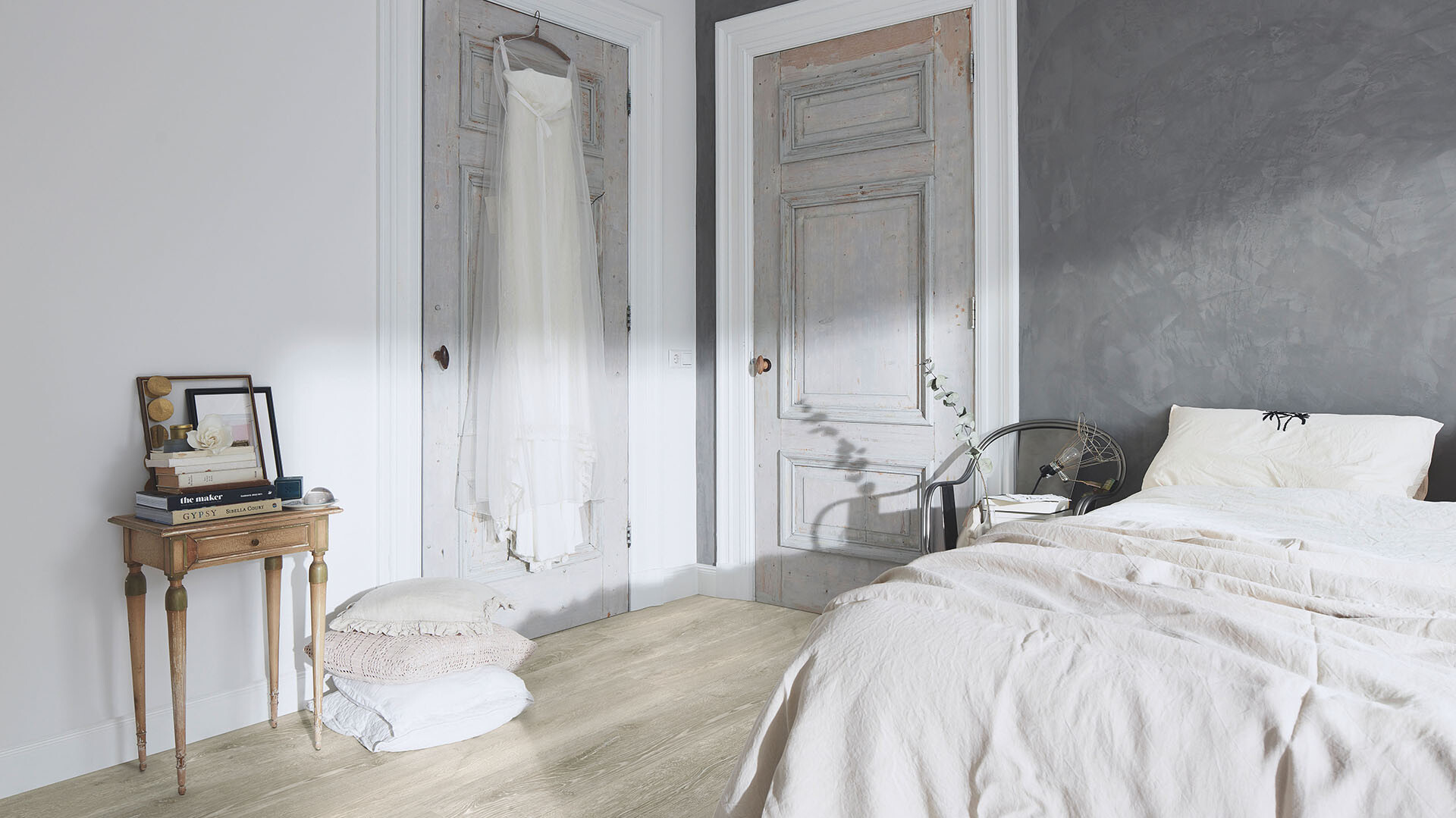
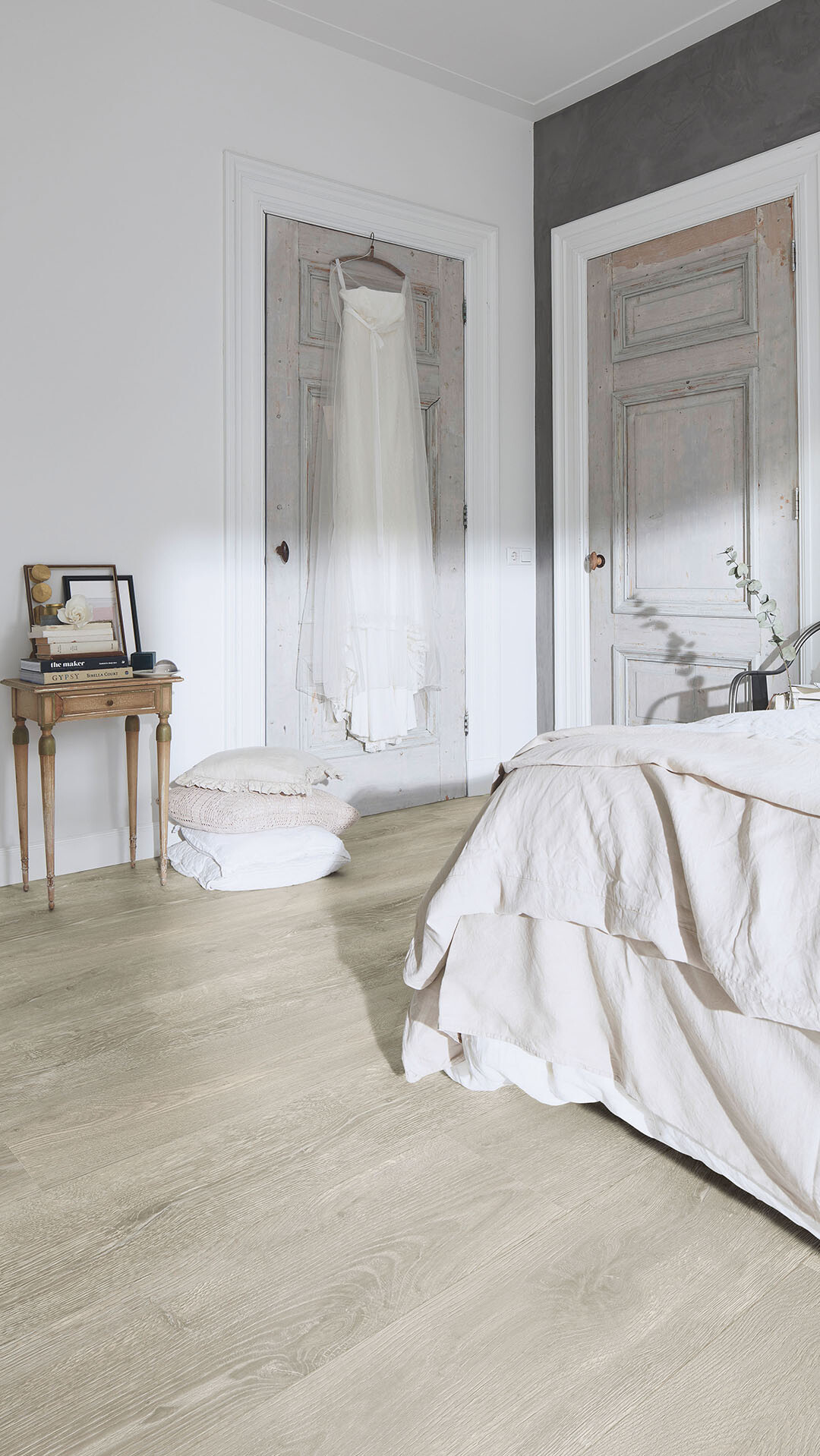

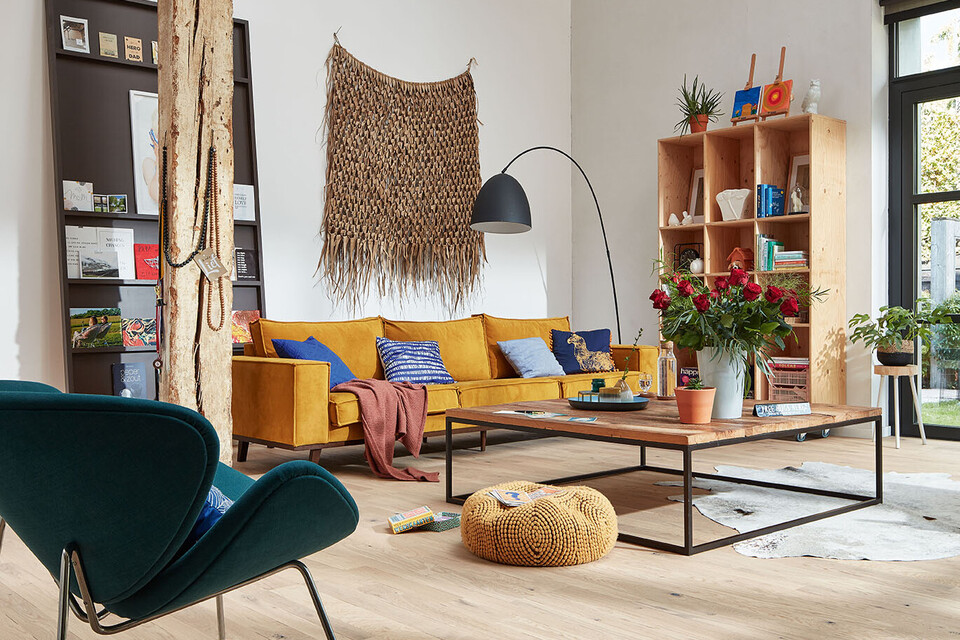
The term “boho” is a shortened form of the word “bohemian” and refers to a movement that dates back to the 19th century. At that time, marginalised people such as artists, poets and philosophers in particular joined together to form what was known as the bohemian movement to rise up against the stiff bourgeoisie. But it was not just a matter of rebellion; the intellectuals aspired to a positive, informal way of life that was not determined by bourgeois conventions. This free-spirited attitude was also reflected in the way they lived, setting up shared flats in studios or old country houses and freely going about their business in whatever way they liked. The hippie movement went on to adopt the boho style in the 1960s, which is why this interior design style is sometimes known as “hippie chic”. Fast forward to the 1990s and a number of artists began to revive the boho style, modernising the concept to transform it into an interior design trend.
The Bohemians of the 19th century were inspired by the Bohemian Roma, who roamed from place to place in colourfully decorated carriages, upsetting many a bourgeois citizen. Against this background, it is clear that the term “bohemian” was not chosen for the movement by chance since it means both “unconventional” and “non-conformist”.
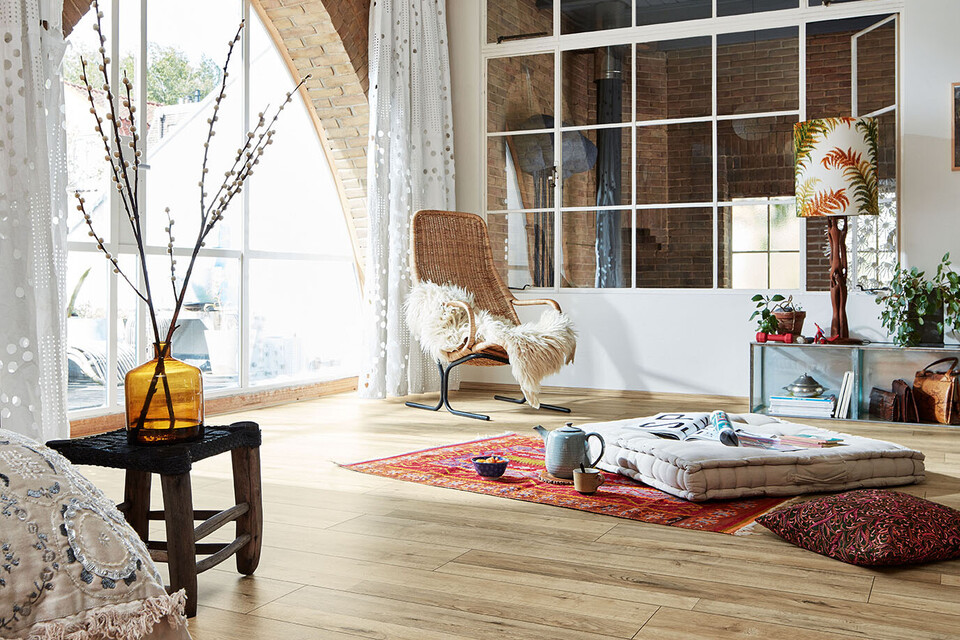
In keeping with its origins, boho is a furnishing style with a great deal of scope for free development. There possibilities really are endless; there are just a few typical features that help to make it what it is. The way this trend is ultimately brought to life all comes down to personal taste and personality. A harmonious appearance is not really a priority, and things like cupboards, armchairs and tables do not necessarily have to be in the same style. The aim is more to create an environment characterised by lightness and freedom with a feel-good atmosphere. It’s entirely your choice whether you’d like to go bold and colourful or keep things rather plain, whether the room is decorated with lively green plants or with dried roses and grasses. Certain furnishings such as black leather trimmings or expensive designer pieces, however, are rarely found in boho living spaces. After all, the basic principle of wanting to steer away from the bourgeoisie still applies.
When decorating in a boho style, it is a good idea to combine a variety of your favourite pieces – for example, souvenirs from different countries. After all, the Bohemian movement is also characterised by its cosmopolitanism. In a boho-style living space, having a mix of styles is an extremely popular look, which is why oriental-style objects can be mixed with vintage items (link to: Old but gold) and Indian cult pieces. Dreamcatchers made of wood and feathers, for example, are among the classic boho accessories, as are oriental fringed carpets on the wall or floor. Items such as pillowcases and blankets are ideally printed with ethnic symbols or feature a batik pattern. Even animals can be incorporated into a boho-style space, whether in the form of ornaments, pictures on the wall, or printed on textiles. The main thing to consider is what your chosen animals actually symbolise – for example, elephants stand for wisdom, cats for self-determination, and eagles for freedom. Candles in all different shapes and sizes are also pretty much indispensable for a boho-chic look. You can even add an extra bohemian vibe to the air in the room with incense sticks or essential oils, if they’re your thing.
When it comes to interior design, natural materials are the perfect choice for the boho look. These could include wood in the form of woven baskets, as well as cotton and linen pillowcases and blankets to complement the overall picture. Other finishing touches include feathers and plants, either fresh or dried, dotted around decoratively wherever you choose. In terms of colour, most things go, although the Bohemian style tends to favour earth tones such as brown, beige and olive green. Strong contrasting colours can be incorporated into your ambience with cushions, blankets, carpets and other home textiles – it all comes down to personal choice and how much colour you’d like to add to your space. Find some further inspiration to create your boho style home here.
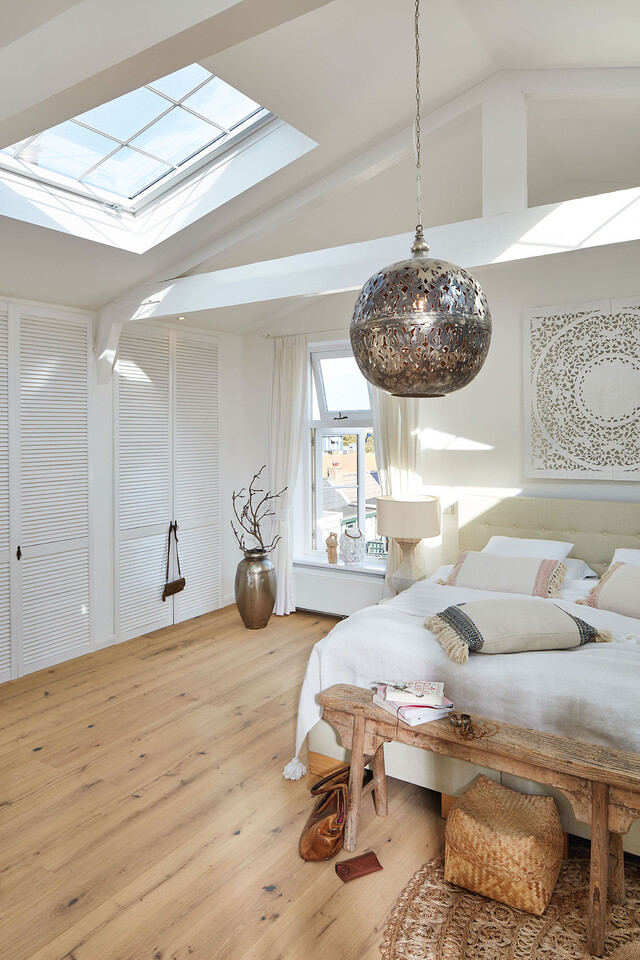
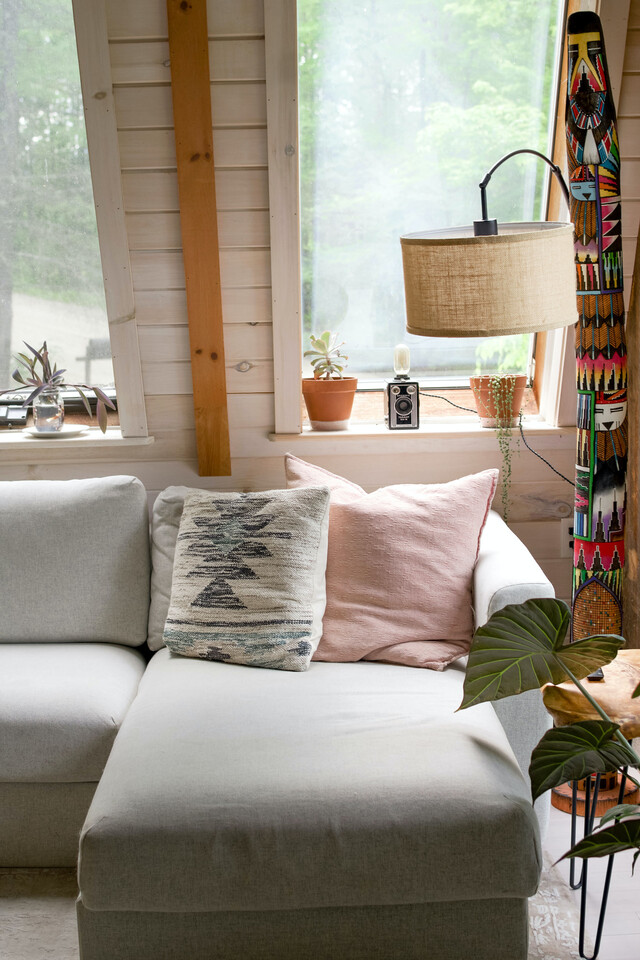
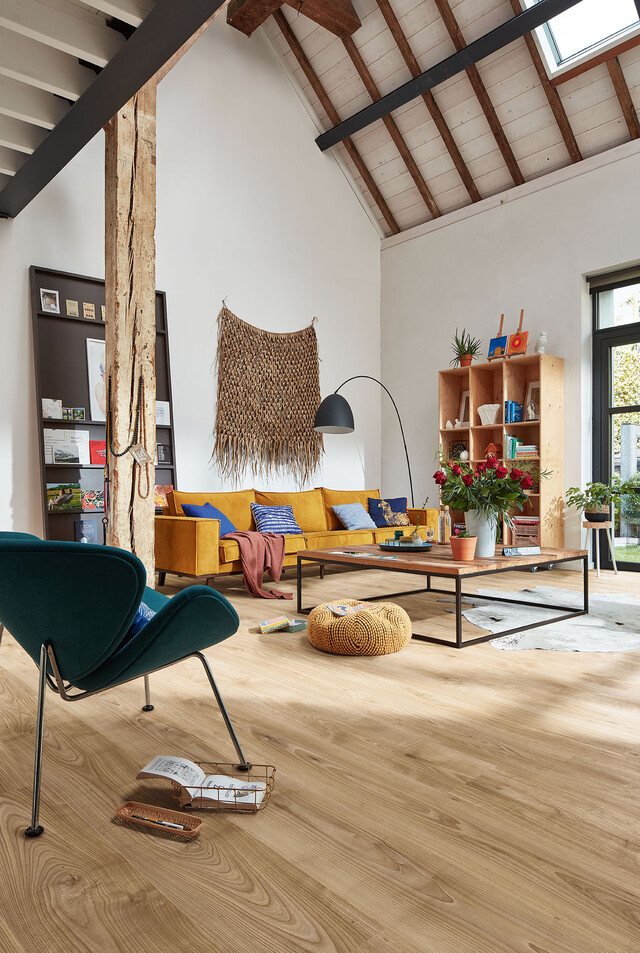
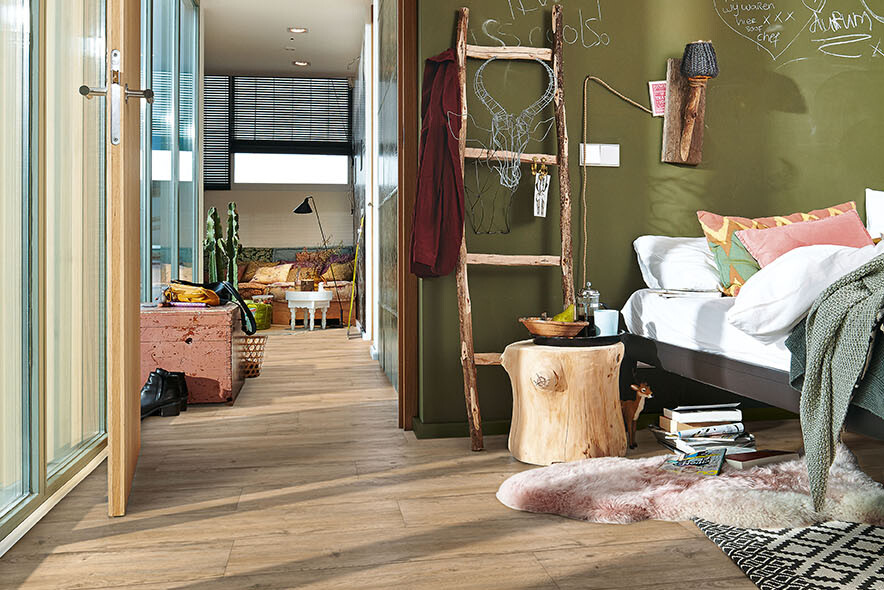
Strictly speaking, the only rule of boho-chic furnishing is to avoid the impression of bourgeoisism and clean lines. This includes steering away from chunky, straight-lined furniture in favour of open, curved forms that embody a real sense of lightness. After all, bohemians love nothing more than a free, carefree lifestyle. The ideal furniture for a boho-chic look includes comfortable rocking chairs or wicker armchairs that invite you to pick up a book or while away the hours deep in thought. Furniture with a high wood content and light colours tend to create the ideal ambience, although the virtually unlimited scope for interpretation also allows for a more rustic look for those who prefer darker furniture. Every last item on display in a boho home is invited to tell a story, from the old shabby chic chest of drawers from the flea market on one wall to Grandma’s old kitchen cupboard on the other. If space permits, a hammock can add a touch of holiday flair. It also makes for an unconventional accessory in any living space and so represents an essential characteristic of the 19th century free-spirit movement.
As far as the floor is concerned, the boho style really allows for your imagination to run wild. Once again, it all comes down to personal taste. If the focus is on darker furniture and colours, a light floor should be chosen to brighten up the overall picture, such as the Laminate flooring White lyed oak. Alternatively, if you prefer real wood look and like it even lighter, MeisterParquet. longlife Oak harmonious in polar white is an excellent choice. If the rest of the interior is kept fresh and cheerful, a dark floor can conjure up a beautiful cosy contrast. The MeisterDesign. pro in Dark crown oak is an excellent choice if this is the look you’re going for.
Maybe you can't imagine how a boho floor would into your own home? Have a try with our Interior Designer. Here's how it's done:
1. Open the Interior Designer and swipe through to find your favourite flooring
2. Use the camera icon to upload a photo of your own room* or select one of the stock images
3. Save your favourite flooring to your mood board by tapping the heart icon
* Legal notice for images uploaded to the visualisation tool